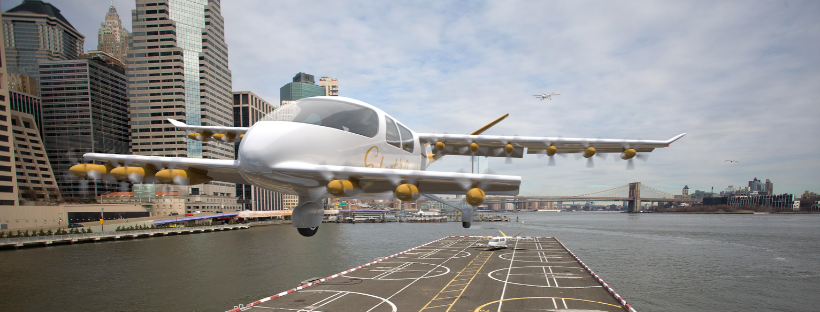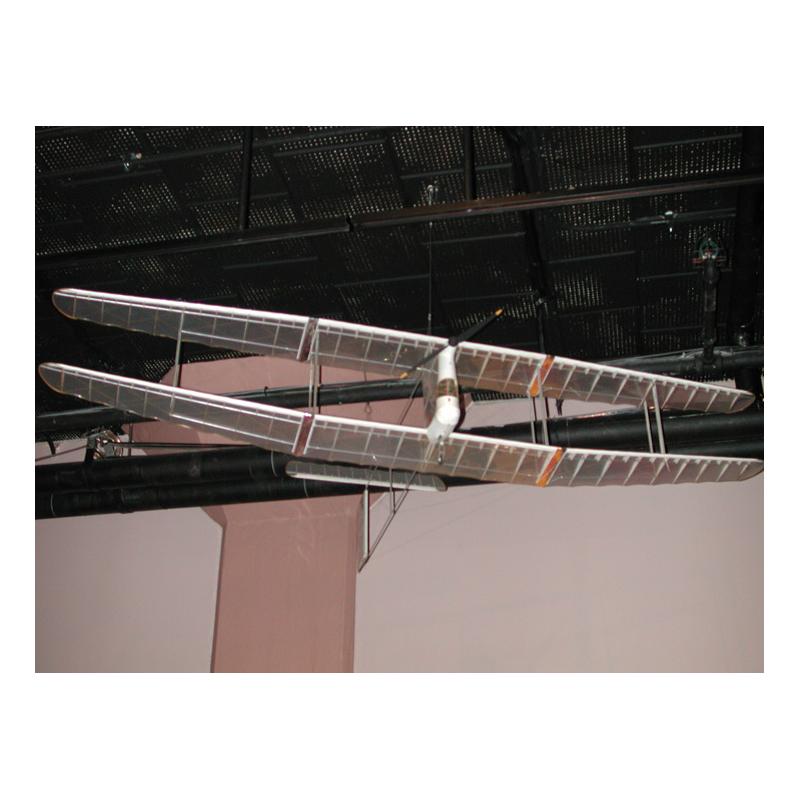Competition is growing in the electric Vertical Take Off and Landing market, with 407 potential builders listed in eVTOL News. Vertical flight takes power, though, and with available batteries limiting range, most such vehicles can make only short hops. Alternatives that allow speedier, longer flights, in the form of electric Conventional Short Take Off and Landing (eCSTOL) aircraft are in development. Such craft offer the benefit of requiring less power for takeoffs and climbs, being more aeronautically-based than power-based. Airflow, for instance, claims operating costs for their eCTSOL craft is one-third that of an eVTOL or helicopter. We will look at three eCSTOL craft that seem to making headway at this time. The infrastructure (in two cases below) to support their flight may already exist. Airflow Curt Epstein, writing in Future Flight, under the headline, “Infrastructure Needs for eSTOL and eVTOL Aircraft May be Closer than Imagined,” notes the “intense study” being undertaken. Speaking at the Vertical Flight Society’s Electric …
Metro Hop Leaps From Tall Buildings
Metro Hop™ is an electric, conventional fixed wing, all-weather aircraft designed to operate within the urban air mobility environment, according to their web site. Different Design Philosophies Metro Hop is a unique view from the leaders of the CAFE Foundation, which is often allied with the Vertical Flight Society. Metro Hop’s fixed-wing approach seems to fly in the face of the team’s normal affiliations. The Sustainable Aviation Foundation was established as a proponent of fixed-wing design by President Brien Seeley, and promotes “pocket airparks,” small urban and suburban airports that would distribute availability of short-range aircraft within walking or cycling distance for many urban dwellers. CAFE would distribute spaces similar to heliports on rooftops or on specialized buildings such as those envisioned by Uber as part of its LIFT program. Metro Hop, according to the development group, would cruise at 400 kilometers per hour (250 mph) and carry two passengers. Using current battery technology, it would have a 160 kilometer …
It’s (Green Aviation) Giving Tuesday, 2014
If you’ve managed to survive Gray Thursday, Black Friday, and a weekend of NFL games stuffed with blandishments to entice you to the nearest mall (Thanksgiving happened in there somewhere), you’re forgiven if you flinch at yet one more presumptuous tug at your purse strings. But we’re talking about helping pioneers on the edge of green technology, crafting the stuff dreams are made of – and making those dreams a reality. On this Giving Thursday, think about contributing to the dream makers who are taking us into a better future of flight. We share a few suggestions here. Solar Flight Eric and Irena Raymond are the first family of solar-powered flight, now cruising Italian skies in the world’s first two-seat sun-powered airplane, the Duo. To assist with further development of their splendid aircraft, including Sunstar, a high-altitude surveillance and communications craft, the couple is selling a beautiful calendar featuring their aircraft. For $37 US or 29 euros plus shipping, you …
EAS VIII: Bruno Mombrinie and Dr. Brien Seeley – Economies and Practical Considerations for Sky Taxis
Bruno Mombrinie, a director for the CAFE Foundation, and Dr. Brien Seeley, founder and President of the organization, gave a one-two presentation on pocket airports and Sky Taxis that examined the practical and operational facets of such a program, first described in detail in a joint NASA/CAFE Foundation document. According to Bruno’s CAFE biography, “As a freshman, he helped build MIT’s Chrysalis human powered airplane. Later that summer he got to fly the plane several times. ‘The feeling of being so, so high (39ft)…to fly under my own power was beyond…I just wanted to burst…actually I was so out of breath from the effort, I could hardly mouth ‘yippee!’” (The Chrysalis, and other MIT designs led to Daedalus, the HPA that flew from Crete to Sicily on April 23, 1988 – 72.44 miles in less than four hours.) This experience with extreme pedal power probably helped inspire his work on the Negative Mass two-piece crankset, reputedly the world’s lightest and stiffest bicycle crankset. His …
EAS VIII – A Day and a Half You’ll Never Forget
Who would pass up a chance to stay at a nice resort, attend lectures that challenge and inspire, and meet at poolside with speakers who bring some of the sharpest minds in the world to bear on some of the biggest problems we all face? Let’s face it. Global warming probably won’t be going away anytime soon, and aviation seems destined to play a bigger part in polluting our otherwise near-perfect atmosphere. Unless…we learn how to make our favorite activity (in the top five for most of us, anyway), into a more responsible way to travel and recreate. Since solving the problems which go with that responsibility will involve the best in aerodynamics, power systems and new, efficient technology, the CAFE Foundation has invited experts in these fields with demonstrated successes in meeting such challenges. To be held April 25 and 26, 2014 at the Flamingo Resort in Santa Rosa, California, the event will host speakers on everything from practical, …
Green Flight Challenge Winners
Monday, October 3 was the second day of Nobel Prize announcements, but also marked the Green Flight Challenge Expo, sponsored by Google and staged under the control tower on Moffett Field, home of NASA Ames Research Center, Mountain View, California. The four airplanes that flew in the Challenge at Charles M. Schulz Sonoma Country Airport in Santa Rosa, California were joined by Greg Stevenson’s full-size mockup of his GFC design and a Pipistrel Virus that had won an earlier NASA/CAFE Personal Air Vehicle (PAV) Challenge. Stevenson’s airplane was a reminder that there were numerous entrants that, for a variety of reasons, could not attend. There is a huge number of aircraft in the wings, so to speak, that will fill these pages in the next months and years. 20 exhibitors showed off their visions of a greener future, and three rows of tents protected exhibitors and their displays from the rain that started mid-afternoon. At about 11:00 a.m., attendees were bussed to Building …


